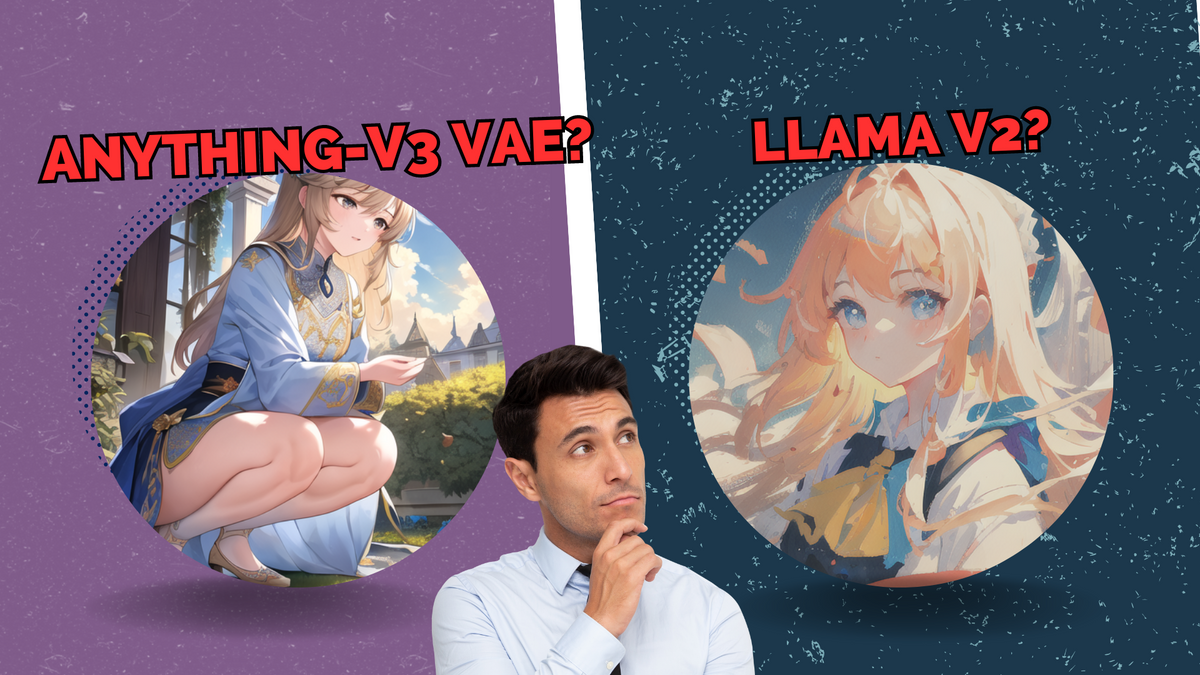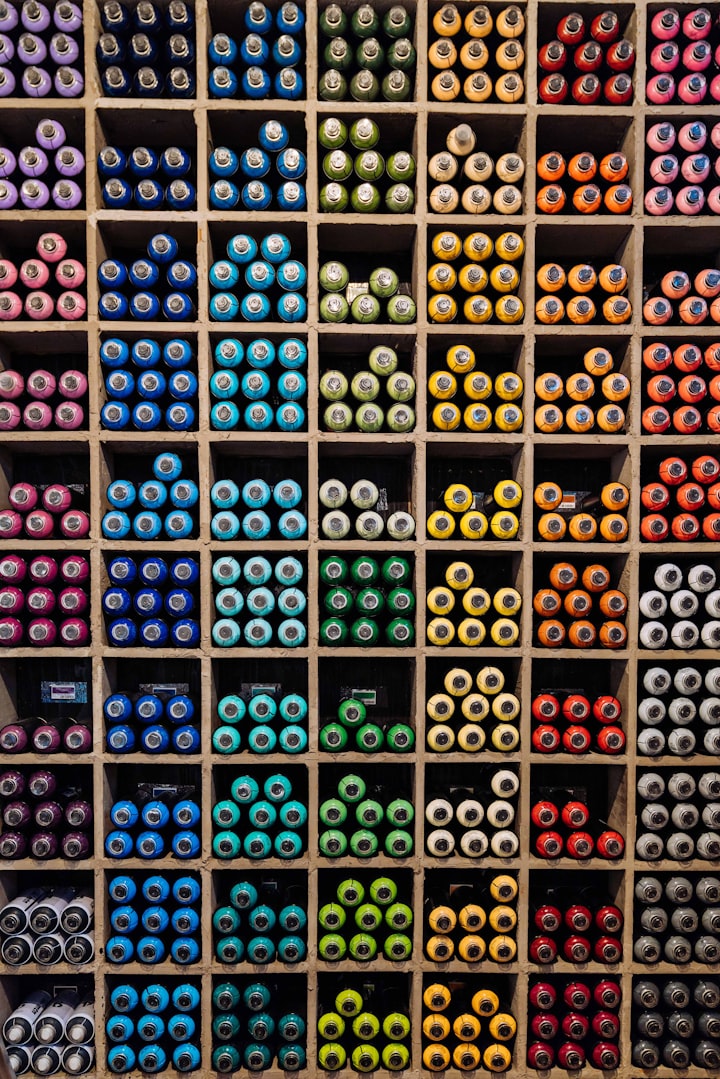Which AI model is best for creating an anime character? Anything-v3 VAE vs Pastel-Mix
Exploring text-to-image AI Models to see which is the best AI model for making a character avatar or character profile picture.

Artificial intelligence has revolutionized the way we approach creative processes. For instance, the Anything-v3.0 and Pastel-mix models are AI engines capable of transforming text descriptions into high-quality anime-style images. Imagine being able to generate concept art for a video game or a storyboard for an animation simply from written descriptions. This could speed up the creative process and open up possibilities for innovation in industries like gaming, animation, and even virtual reality.
Subscribe or follow me on Twitter for more content like this!
In this post, we will compare these two models, ranked 233 and 1117 respectively on AIModels.fyi, to highlight their unique features and potential uses. Moreover, we'll explore how to use AIModels.fyi to find similar models and compare them. So, let's get started.
About the Anything-v3.0 Model
Created by cjwbw, Anything-v3.0 is a highly advanced text-to-image AI model. It employs stable diffusion techniques to generate high-quality, detailed anime-style images from text inputs, resulting in appealing and realistic outputs. More details about the model can be found here.
In simple terms, Anything-v3.0 is an AI artist. You give it a written description, and it translates that into a visually appealing anime-style image. This has enormous potential in areas like video game development, animation, and entertainment where quick generation of concept art, storyboards, or promotional material can speed up the creative process.
Understanding the Inputs and Outputs of the Anything-v3.0 Model
Inputs
- prompt string: This is the main input where you describe what you want the AI to generate.
- negative_prompt string: Descriptions of elements you do not want to see in the generated image.
- width integer and height integer: Define the output image's dimensions.
- num_outputs integer: Determines the number of images to output.
- num_inference_steps integer: Defines the number of denoising steps.
- guidance_scale number: Scale for classifier-free guidance.
- seed integer: Random seed for image generation.
Outputs
The output is an array of URIs of the generated images.
About the Pastel-mix Model
Similarly, Pastel-mix, also created by cjwbw, is a high-quality text-to-image AI model. It produces detailed anime-style images from text descriptions using latent diffusion techniques.
Essentially, Pastel-mix operates like Anything-v3.0 but with a twist - it generates images with a distinct pastel anime art style. This model can be a game-changer for artists and designers in the anime industry, allowing them to quickly turn written concepts into detailed, pastel-colored anime illustrations.
Understanding the Inputs and Outputs of the Pastel-mix Model
Inputs
The inputs for Pastel-mix are identical to those of Anything-v3.0, allowing for similar control over the image generation process.
Outputs
Just like Anything-v3.0, Pastel-mix outputs an array of URIs representing the generated images.
Comparing the models
While both Anything-v3.0 and Pastel-mix translate text into anime-style images, they differ in their aesthetic outputs and use cases.
Anything-v3.0 generates high-quality, detailed anime-style images suitable for a wide range of applications, from gaming to entertainment. It could be particularly beneficial for projects requiring realistic anime-style outputs.
On the other hand, Pastel-mix specializes in producing images with a distinct pastel anime art style. This unique aesthetic might appeal to creators looking for a softer, more stylized visual output, especially in the realms of character design and illustration in the anime industry.
These models serve different needs, and the choice between the two would depend on the specific requirements and artistic preferences of your project.
Limitations of Text-to-Image AI Models
While text-to-image AI models like Anything-v3.0 and Pastel-mix have made significant strides in generating images from text descriptions, they're not without their limitations. Here are a few things to keep in mind when using these models:
Quality and Accuracy: Even the most advanced text-to-image models might not always generate images with 100% accuracy. Some descriptions may be too abstract or complex for the model to interpret accurately, resulting in images that don't exactly match the user's intentions.
Understanding Context: These AI models may struggle with understanding and translating contextual or abstract information. For instance, if given a text prompt that relies heavily on cultural context or subjective interpretation, the AI might not generate an image that aligns with human expectations.
Ethical and Privacy Concerns: As with any AI technology, there are ethical implications to consider. The misuse of these models to create deceptive or harmful content is a concern. Additionally, any text inputted into the model could potentially be stored and used in ways the user may not expect, leading to privacy issues.
Resource Intensive: Text-to-image models can be computationally intensive, requiring high-performance hardware and potentially incurring significant costs when used extensively or for high-resolution image generation.
Lack of Interactivity: Current models are primarily one-way, meaning they generate images based on initial input but do not allow for back-and-forth refinement or interactive editing based on the output.
Dependence on Training Data: The performance and biases of a model largely depend on the data it was trained on. If the model has been trained with a limited set of images or biased data, the outputs may reflect these limitations and biases.
It's essential to keep these limitations in mind when using text-to-image models, whether for personal, commercial, or research purposes. While AI technology continues to improve, it is not yet a perfect substitute for human creativity and context understanding. However, despite these challenges, AI's potential to assist and augment our creative processes is immense.
Taking it Further - Finding Other Text-to-Image Models with AIModels.fyi
AIModels.fyi is an excellent resource for discovering AI models that cater to various AI needs and applications, from text-to-image models like Anything-v3.0 and Pastel-mix to language translation models, natural language processing models, and more.
To find other text-to-image models on AIModels.fyi, follow these steps:
- Visit AIModels.fyi.
- Use the search bar at the top of the page. Enter keywords related to the model you're interested in, such as "text-to-image".
- From the search results, you can explore each model individually. Click on the model's name to open a detailed overview of the model, including its features, functions, creator information, and usage details.
By comparing different models, you can choose the one that best fits your project's needs and requirements. Whether you're interested in creating anime-style images, realistic portraits, or anything in between, there's likely a model on AIModels.fyi that can help you achieve your creative goals.
Remember that each AI model is unique and designed for different purposes. Take time to explore their capabilities and find the best match for your specific project.
As AI technology continues to advance, we can expect even more innovative models to appear, expanding the horizons of what's possible in the realm of artificial intelligence and creative design.
Conclusion
The fascinating field of AI continues to grow and evolve, offering powerful tools like text-to-image AI models, which have the potential to revolutionize many industries and creative pursuits. With models like Anything-v3.0 and Pastel-mix, we are seeing an exciting glimpse into the future where translating ideas from our imagination into tangible visuals can be as simple as writing a sentence.
Despite their impressive capabilities, it's important to remember these models still have limitations. They are not entirely perfect in understanding context, ensuring accuracy, or avoiding potential ethical issues. Nevertheless, as we continue to refine and improve these technologies, we will see an even more profound impact on how we create, learn, and communicate.
The array of models available on platforms like AIModels.fyi showcases the broad scope of current AI advancements and the variety of tools available for different needs and applications. As we continue exploring these technologies, we look forward to seeing how they'll shape our digital landscape in the years to come.
Subscribe or follow me on Twitter for more content like this!
AI, with its opportunities and challenges, has become an integral part of our lives, impacting us in ways we couldn't have imagined before. As we move forward, it is crucial for us to harness its potential responsibly and creatively, aiming for a future where AI helps us to unlock even more of our human potential.




Comments ()